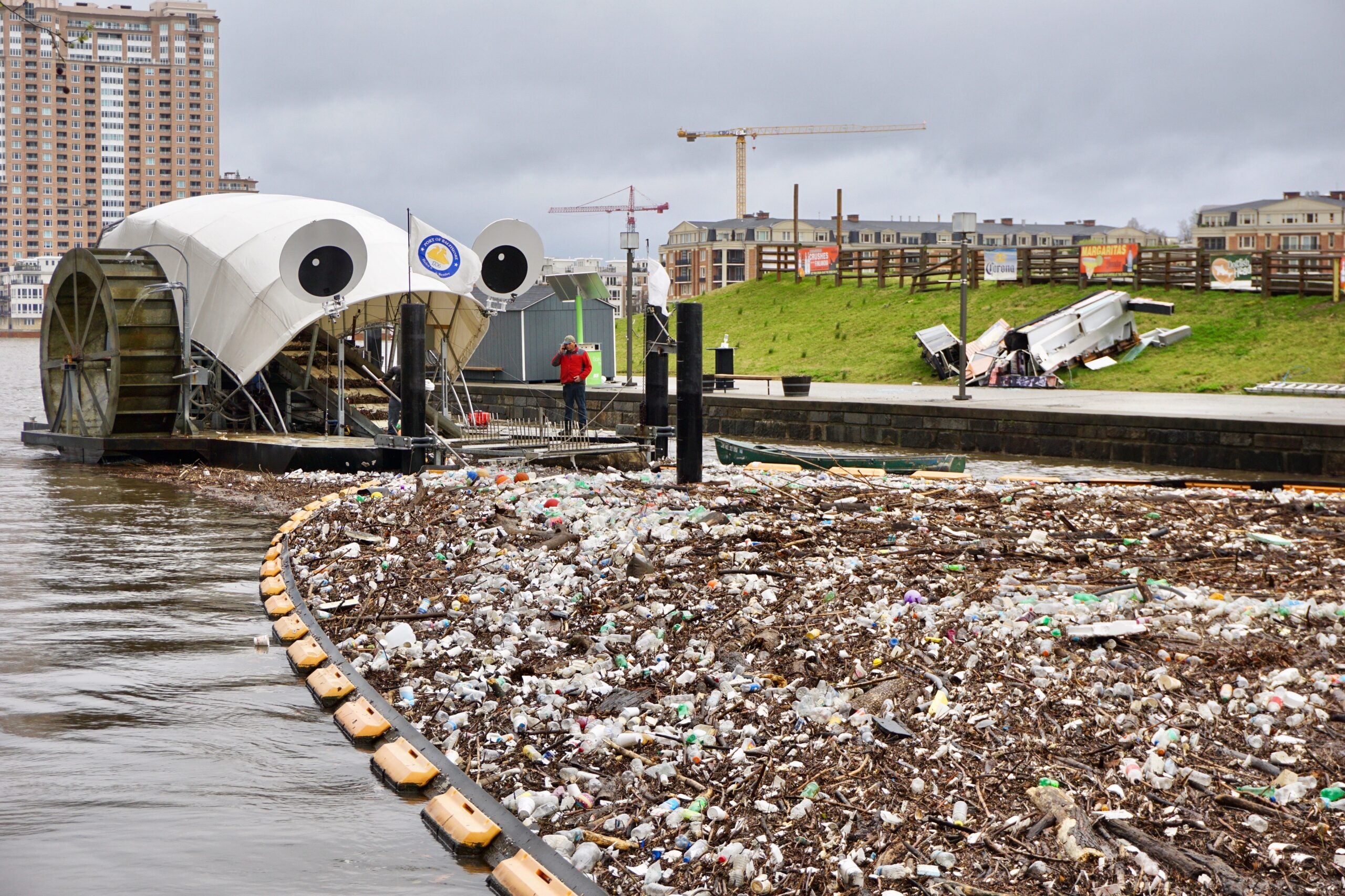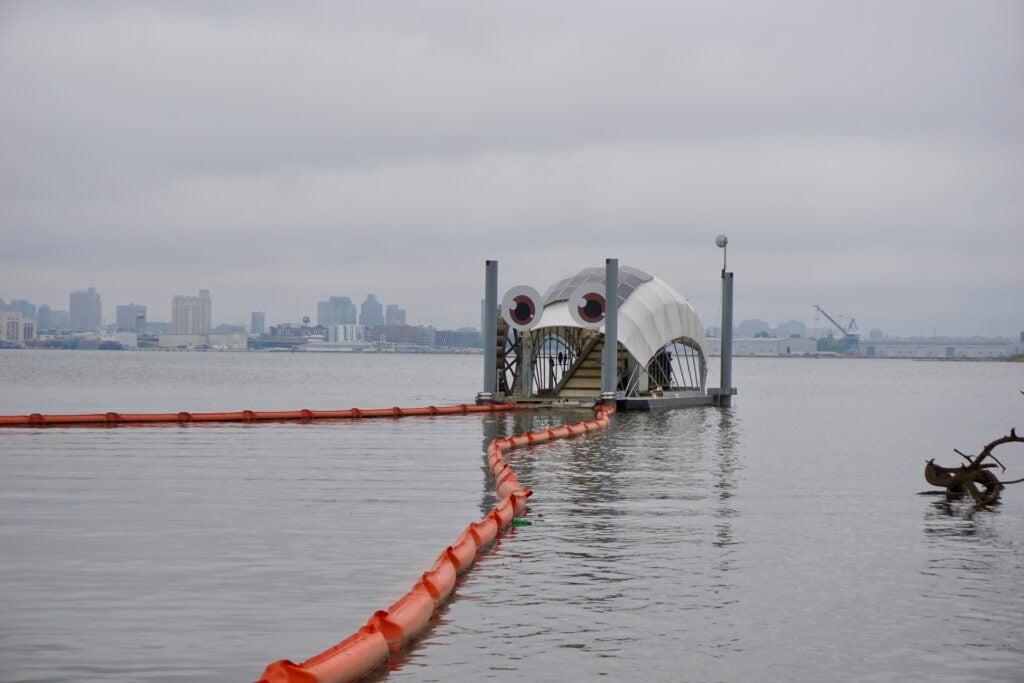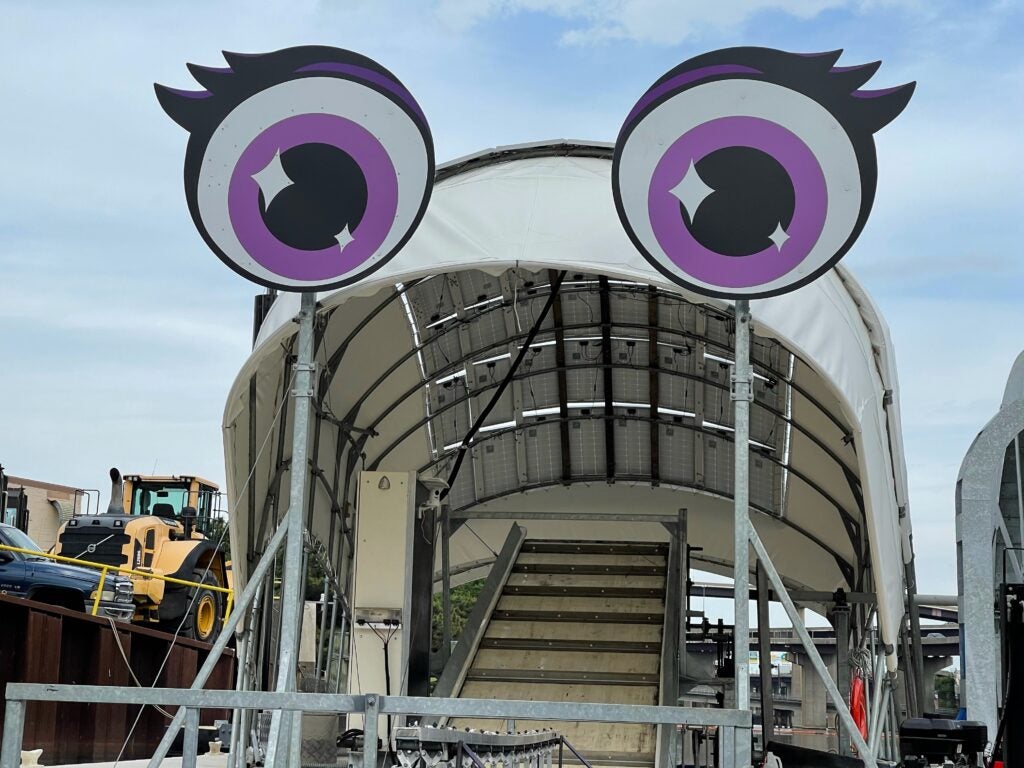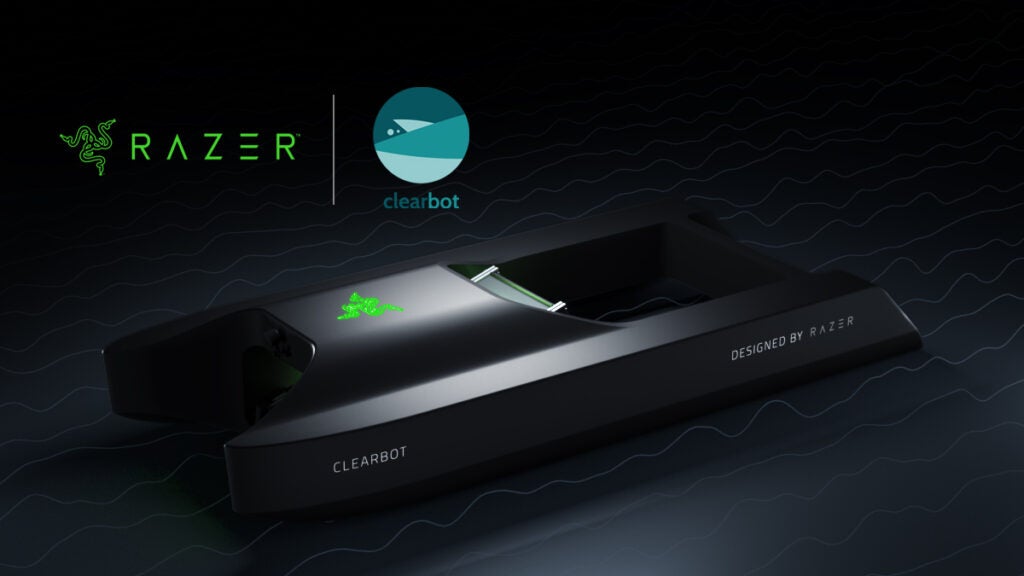
Robots are cleaning our oceans, harbours and rivers. However, as COP26 draws closer, the innovators behind these nautical drones and trash interceptors say that no matter how much they clean, it’s only politicians who can make a real change.
And change needs to happen. Plastic is a key driver of climate change. The plastic industry is one of the most greenhouse gas intensive industries in the world. By 2050, its carbon burden could reach over 56 gigatons, which is about 13% of the entire remaining carbon budget, according to a report from the Center for International Environmental Law. The carbon budget is the amount of extra carbon the planet can tolerate before tipping global warming over 1.5 degrees.
However, the problem doesn’t stop once the balloons, buckets, baby bottles, tyres, food containers, TVs and other plastic products have been produced. A lot of it, eight million tons per year to be exact, ends up in our oceans.
Plastic makes up for 80% of all marine debris from surface waters to deep-sea sediments. Thousands of fish, birds and other maritime species meet their end every year entangled by the waste. Others eat it and are then eaten in return until microplastics inevitably end up in humans.
Plastic pollution of the ocean also contributes to global warming. The degradation of plastic in our waters has been linked to the production of greenhouse gases, which contribute to climate change.
Nobody knows more about the impact of plastic than the innovators fighting the contamination of our oceans with robots, drones and new technologies.
 Mr Trash Wheel
Mr Trash Wheel
It got worse every day. For 20 years, John Kellett walked to his job as the director at the Baltimore Maritime Museum. Walking across a footbridge, he saw first-hand how plastic cups, bags, cigarette butts, bottles and other man-made detritus floated into Baltimore Harbor en route to Chesapeake Bay.
“Every day I was constantly confronted with the trash in the harbour,” Kellett tells Verdict.
It didn’t take long to realise that the problem wasn’t that people in the city threw their rubbish into the different waters upriver willy-nilly.
“That’s not where the trash comes from,” Kellett explains. “When it rains, it gets washed down from the streets, the parking lots, the alleys – [if it’s] anywhere on land within the watershed, [it] gets washed down into the storm drains and into the small creeks and then into the bigger waterways, on into the harbour and, eventually, into the Chesapeake Bay and the Atlantic Ocean.”
But recognising the cause of the illness meant that he could administer a cure. Kellett realised that by intercepting the rubbish in the river, he could prevent it from slipping into the harbour and further out into the Atlantic.
Around 2006, Kellett approached the city council, urging it to do something about the trash being washed out into the harbour. “They said, ‘we’re open to ideas,'” he remembers.
Taking the politicians at their word, he got to work. He realised that the problem with rubbish rolling down the river was particularly bad during and after heavy rains.
However, Kellett also recognised that the rippling currents that the rains created also presented him with an opportunity. By harnessing the power of the flow, the only thing he’d really need was some way of collecting the waste at the mouth of the river.
Having first jotted down the initial concept on a cocktail napkin at a party, he approached the city with his idea. They liked it. After securing funding from a local foundation, he built his prototype, which was first tested in 2009.
Five years later, in May 2014, the prototype had evolved to the finished product: Mr Trash Wheel.
Its design is reasonably simple. It is a semi-autonomous rubbish interceptor that is powered by a mix of solar and hydro power. The googly-eyed mollusc-shaped fifty-foot-long machine weighs nearly a hundred thousand pounds.
Two booms are attached to the front of Mr Trash Wheel to funnel the debris into the mouth of the machine. An electronic rake places the detritus on a conveyor belt. Once the rubbish gets to the top of the belt, it is dumped into a dumpster sitting on a separate floating barge. Thanks to an onboard internet connection, Kellett and his team members are also able to monitor the entire process on their smartphones.
Despite its reasonably simplistic design, Mr Trash Wheel has become a local attraction. The googly-eyed trash interceptor is the theme of a public festival and local breweries have named beers after it. Mr Trash Wheel even has its own Instagram account and a semi-secret society of fans called The Order of the Wheel.
The invention has also spawned a family of four wheels around Baltimore, with the additional members of the family having been named Captain Trash Wheel, Professor Trash Wheel and Gwynnda the Good Wheel of the West.
 Picking up pythons
Picking up pythons
To date, the Mr Trash Wheel family has collected over 1,600 tons of trash and debris. That Includes over 12 million cigarette butts, 1.3m foam containers, a guitar, 5,300+ sports balls, over 1.2 million plastic bottles and one living ball python, which the team spotted on Mr Trash Wheel’s camera monitor and subsequently rescued.
“One of the beers is actually called Mr. Trash Wheel’s Lost Python Ale, commemorating the day that the trash wheel picked up and saved a python,” Kellett laughs.
When not saving escaped African reptiles, Kellett’s team is busy working on extending the wheel family to Texas, California and Panama. They are also in the early stages of investigating the fundraising capabilities of setting up trash wheels in New York City and in San Francisco.
“I can actually not believe that this little idea that I made the model of in my basement with stuff I had lying around, turned into this,” Kellett chuckles. “People have permanent tattoos of trash wheels. I still can’t believe that. I mean, I love the trash wheel as much as anyone, but they’ve really generated a fandom for it. And I think it’s fantastic and am really humbled by it.”
 Robots cleaning the oceans everywhere
Robots cleaning the oceans everywhere
Mr Trash Wheel may be one of the most high profile ocean-cleaning robot initiatives out there, but it’s not alone. A quick Google search reveals a plethora of similar projects. There are crab-like robots designed by BioRobotics Institute researchers to clean the ocean floor. And there’s Jotun Hull Skating Solutions, whose machinery cleans ship hulls to reduce greenhouse gas emissions and cut fuel costs.
Other companies, like Hong Kong-headquartered ClearBot, have designed nautical drones that drive around inside harbours to clean up marine plastic waste. These robots essentially work as water-based Roombas, although they are cleaning up an area much bigger than your average house.
There’s even the robot devised by the Ocean Cleanup, a Dutch non-profit, which bears an uncanny resemblance to Mr Trash Wheel in the sense that it is also deployed at the mouth of rivers and funnels debris into its mouth. The Ocean Cleanup’s founder, Boyan Slat, has previously said that his team drew inspiration from everything that went before, including Mr Trash Wheel.
The main difference is that the Ocean Cleanup claims to be designed for serial production and deployment, with Slat aspiring to deploy his interceptor across 1,000 rivers by 2024, according to the New Yorker. It is also 100% solar powered.
Kellett isn’t too bothered with the similarities between Mr Trash Wheel and the Ocean Cleanup’s solution or any of the other rival robots out there.
“There’s plenty of trash to go around,” he shrugs, adding that he hopes that the community could be more collaborative.
Ocean-cleaning robots are not enough
Despite the plethora of robots cleaning the ocean, the innovators Verdict has spoken with agree on one point: their efforts are not enough.
“Small policy changes can make a bigger difference than what our company can do in five years,” Sidhant Gupta, CEO and founder of ClearBot, tells Verdict.
However, that also highlights where the real value of these devices really is.
Firstly, they are great for environmentalist propaganda – the good kind. As made evident by Mr Trash Wheel’s popularity, robots, drones and rubbish interceptors can help raise awareness about the problem without being too preachy about it.
Secondly, the data collected from robots in the ocean and rivers can help improve the understanding of how big the problem is, where the pain points are and who the biggest polluters are.
“If I’m collecting waste, that’s great,” Gupta says. “But in the long term, I’m helping [the government] improve the waste management system on land, prevent leakage, and basically encourage policy that understands what kind of waste is entering the water.”
Mr Trash Wheel provides an example of this. Since the family’s inception, they have collected over a million styrofoam containers. This fact was one of the contributing factors behind Baltimore introducing a styrofoam ban in 2019.
“We’re already seeing a lot fewer of them in water,” Kellett says.
With COP26 coming up in a few weeks, here’s hoping that these robots can provide inspiration to the powers that be.



